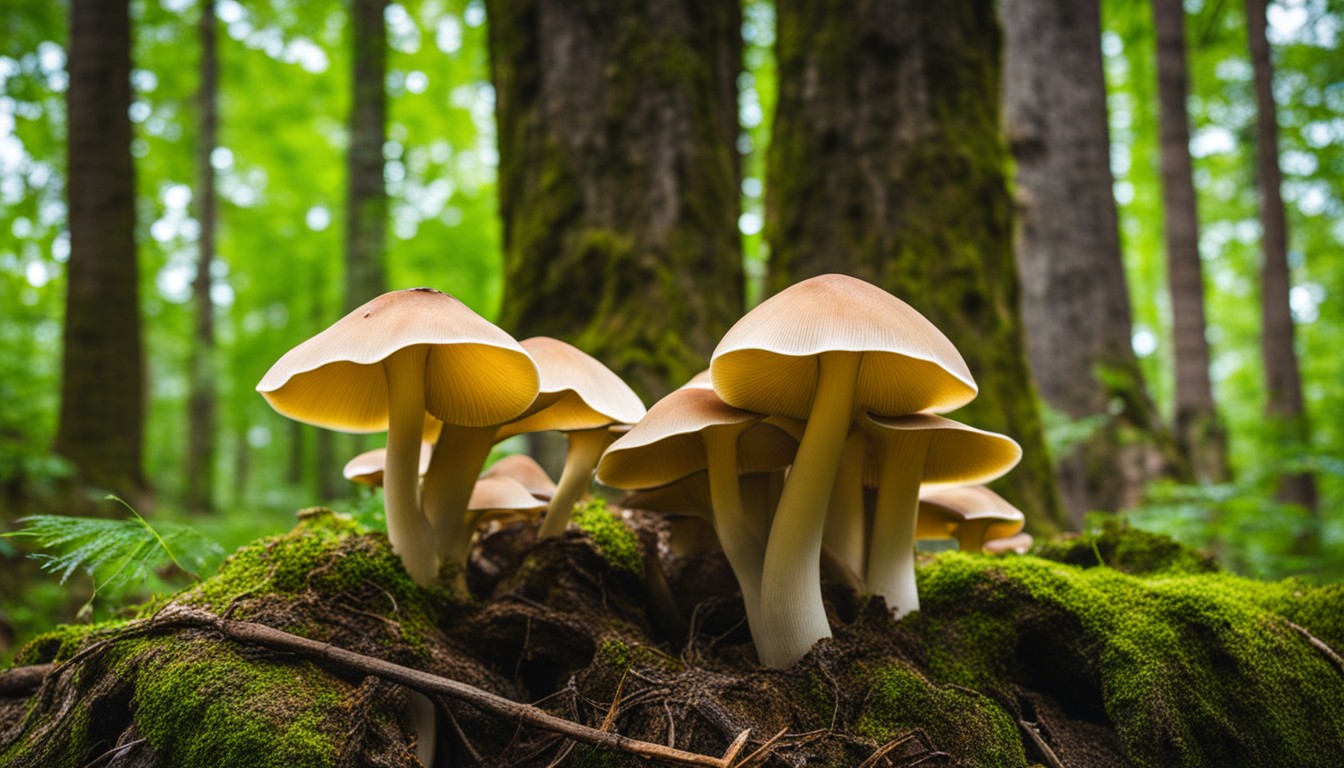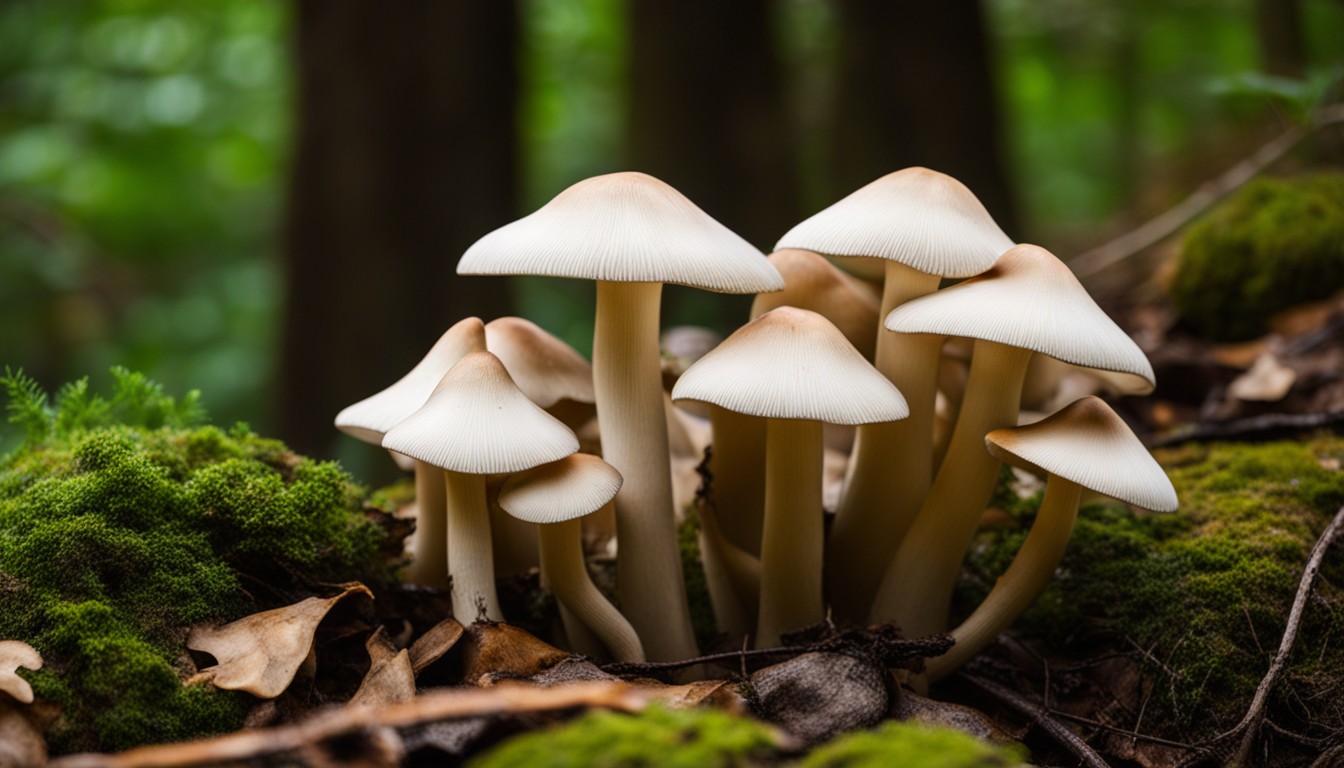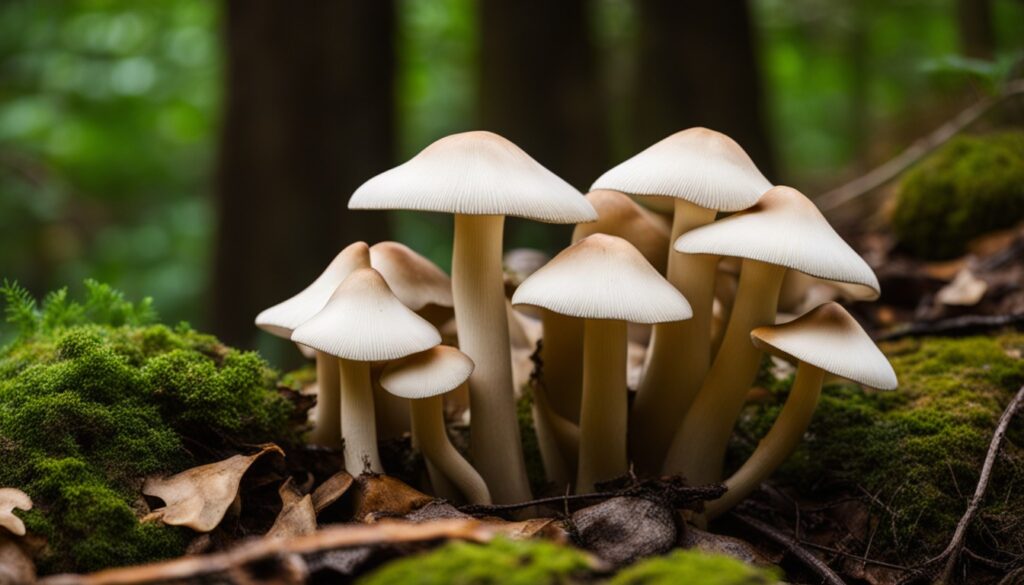Mushrooms in Vietnam offer a diverse and fascinating world of fungi waiting to be explored. From the dense forests of the northern regions to the vibrant markets of Ho Chi Minh City, this guide will introduce you to the captivating mushroom species found throughout the country. Discover the unique flavors, medicinal properties, and cultural significance of these fungi, and gain valuable insights into the traditional practices of mushroom foraging and cultivation in Vietnam. Whether you’re a gourmet enthusiast, a nature lover, or simply curious about the rich biodiversity of Vietnam, this comprehensive guide will ignite your passion for mushrooms and deepen your understanding of Vietnam’s natural wonders. So grab your mushroom basket and embark on an unforgettable adventure into the extraordinary world of mushrooms in Vietnam.
Introduction to Vietnam’s Mushroom Diversity
Vietnam’s diverse ecology harbors a rich, varied fungal biodiversity encompassing myriad mushroom species. From edible variants fundamental to local cuisine to rare, potent medicinal mushrooms, its fungal world is vibrant and plentiful.
The country’s unique geography, marked by a variety of ecological zones ranging from high-altitude mountainous regions to coastal habitats and tropical forests, significantly contributes to the wealth of mushroom diversity found within its boundaries.
Overview of Vietnam’s Ecological Zones
Vietnam, with its broad range of ecological zones, fosters a rich diversity of mushroom species. From its mountainous highlands, dense tropical forests to fertile river deltas, each zone contributes uniquely to mushroom proliferation.
- Mountainous Highlands: Home to many unique and native mushroom varieties such as Cordyceps Sinensis.
- Lowland River Deltas: Dominated by cultivated edible mushrooms like Oyster and Straw Mushrooms due to fertile soils.
- Dense Tropical Forests: They treasure rare and exotic mushroom species like Lion’s Mane and Cauliflower Mushrooms.
- Coastal Regions: These areas support growth of salt-tolerant mushroom species.
Importance of Mushrooms in Vietnamese Cuisine
Mushrooms, regarded as indispensable, play a pivotal role in Vietnamese cuisine. They add not only textures but an array of flavors, elevating traditional dishes to gastronomical compositions.
- Utilized in the creation of traditional Soups
- Key ingredient in Stir-fries, Stews, and Hot pots
- Enhancements to Rice and Rice Noodle dishes
- Adds umami flavor to marinades, Sauces, and Dips
- Powdered for Spices and Tea Infusions
Cultural Significance of Mushrooms in Vietnam
Mushrooms in Vietnam have a significance that extends well beyond mere culinary applications. They serve as potent symbols in both folklore and religion, deeply ingrained in the cultural fabric of this Southeast Asian nation. The mushroom’s medicinal qualities often associate them with longevity and spiritual purity, accentuating its symbolism.
In Vietnamese culture, mushrooms symbolize longevity and spiritual purity, playing intrinsic roles in cuisine, art, folklore, communal activities, and religious rituals, demonstrating their multi-faceted significance.
Historically, Vietnam’s relationship with mushrooms has been one of reverence. Their abundance in the country’s vast forests and intricate connection with the Vietnamese cuisine has woven mushrooms into the country’s cultural narrative.
The mushroom’s presence is ubiquitous not only in Vietnamese pantries but also in its literary and artistic expressions. From sage advice in old proverbs to intricate ceramics art, mushrooms find their representation in many forms.
The role of mushrooms in community building can’t be ignored either. Mushroom hunting has been a communal activity for centuries, bringing village communities closer and reinforcing interdependence.
Lastly, mushrooms’ incorporation in religious rituals showcases the revered status they enjoy in traditional Vietnam, further cementing their cultural significance. To the Vietnamese, these humble fungi are more than just sustenance. They are tokens of good health, prosperity, longevity, and even spirituality.
Popular Edible Mushroom Varieties in Vietnam

Renowned for their culinary uses, the most cherished mushrooms in Vietnam include Nameko, Oyster, Straw, Shiitake, and Wood Ear. Each variety brings a unique flavor, texture, and nutritional profile, adding depth to traditional dishes such as Pho, Rice Noodles, and Hotpot.
Nutritionally, Vietnamese mushrooms are a powerhouse. For instance, Shiitake mushrooms are packed with vitamins B and D, and essential minerals. Wood Ear mushrooms are lauded for their high iron content, whereas Oyster mushrooms boast high protein levels, showcasing why these mushrooms are not only culinary staples, but also pivotal to a healthy diet.
Nameko Mushrooms
Nameko mushrooms, or Pholiota nameko, are commonly grown in Vietnam’s cooler highlands. Farmers use an intricate method of inoculating logs with spores, ensuring a steady harvest of these shiny, amber-hued marvels.
Within Vietnamese cuisine, Nameko mushrooms stand out for their slimy caps, adding smoothness to traditional dishes like Pho and hot pots. Their subtly sweet flavor and slight crunch make them a cherished ingredient in stir-fries and soups.
Oyster Mushrooms
Recognized not only as a culinary delight but also for their significant economic and medicinal values, oyster mushrooms are predominant in Vietnam. These fleshy, delicate-textured mushrooms, with subtle woody taste profiles, are surprisingly rich in nutritional and therapeutic value.
Vietnam’s humid climate and fertile soils create optimal conditions to breed superior-quality oyster mushrooms. The unique environment imbues these fungi with an enhanced flavor profile, constituting a savory intensity, not commonly found in varieties grown in less favorable climatic conditions.
Straw Mushrooms
Straw Mushrooms undoubtedly contribute significantly to the agricultural economy of Vietnam. Their quick growth and high yield make them an excellent choice for commercial cultivation, offering farmers a reliable and profitable source of income.
Culturally, Straw Mushrooms hold a cherished place in Vietnamese cuisine. From steamy pho to savory stir-fries, these delicate fungi are lauded for their rich umami flavor and soft texture, adding depth to a plethora of dishes.
While tending to the culinary palate, Straw Mushrooms also offer a spectrum of health benefits. They’re full of vital nutrients like vitamins B and D, making them a superfood to reckon with in the Vietnamese diet.
In the arena of medicinal uses, Straw Mushrooms continue to shine. With their potent antioxidant properties, they’re used in traditional holistic remedies to clear heat from the body and to support liver health.
As a popular ingredient, Straw Mushrooms are found in markets across Vietnam. Local commitment to sourcing fresh, quality produce ensures their constant demand, validating their crucial role in Vietnam’s agricultural landscape.
Shiitake Mushrooms
One of the heavy-hitters in Vietnam’s mushroom export business is the Shiitake. This highly-prized fungi has aided in bolstering the country’s agricultural economy, being sought after globally for its umami-rich flavor and health benefits.
Cultivation of shiitake in Vietnam adopts precise and professional techniques. Farmers often grow these mushrooms on wood logs or in a substrate mixture that simulates their natural growing environment, contributing significantly to the biodiversity of local agricultural systems.
The Shiitake’s widespread presence in Vietnam is testament to its adoption and success in this geography. This has led to Vietnam becoming a major shiitake producer, blessed with perfect cultivation conditions and a diversity of Shiitake strains that are inherent to the country.
Wood Ear Mushrooms
Sustainably harvested, Wood Ear Mushrooms are a vital part of Vietnam’s diverse fungal ecology. Responsible foraging practices contribute to the preservation of their surrounding habitat while ensuring a steady supply.
Rich black-brown hues and a unique, jelly-like texture distinguish Wood Ear Mushrooms. They present a subtly earthy flavor, becoming a versatile ingredient in various Vietnamese cuisines.
Often found on decaying logs and tree trunks, the ecological footprint of Wood Ear Mushrooms is minimal. They play a pivotal role in wood decaying processes, aiding in natural recycling and forest health.
In the Vietnamese kitchen, these mushrooms remain a staple. Their crunchy, almost rubbery texture, once cooked, adds dimension to stir-fries, soups, and salads; absorbing flavors while giving an exciting mouthfeel.
Their sustainable farming methods, coupled with their significance in maintaining ecological balance, make Wood Ear Mushrooms a bold testament of Vietnam’s harmonious interplay between nature and gastronomy.
Exotic and Rare Mushroom Species of Vietnam

Vietnam shelters a cache of enigmatic mushroom species, shrouded in secrecy and often inaccessible due to their rarity. These cryptic mycological wonders not only intrigue botanists but also lure culinary enthusiasts and traditional healers.
Intricately woven into Vietnamese culture, exotic mushrooms feature prominently in local traditions, healing practices, and regional festivities. The diverse usages underscore the deep-rooted respect for biodiversity that has been vividly imprinted into Vietnamese customs and beliefs.
Lingzhi Mushrooms
Lingzhi mushrooms, steeped in Vietnamese folklore, play a meaningful role in traditional medicine. Known for their exceptional therapeutic properties, they’re considered a symbol of longevity and health.
Thriving in humid, mountainous forests of Vietnam, the Lingzhi mushrooms require specific environmental conditions for growth. This distinctive fungi manifests on hardwoods and dead or dying trees.
Cultivation practices incorporate traditional methods, with artful precision enhancing the quality of the produced mushrooms. Temperature and humidity control, alongside local wisdom, epitomize the meticulous process behind Lingzhi mushrooms’ cultivation.
Cordyceps Sinensis
Vietnam has become a significant player in the global market for Cordyceps Sinensis, capitalizing on the high demand for this unique and precious mushroom. The farming of Cordyceps, an age-old tradition, has transformed into a prolific industry.
Renowned for its medicinal properties, Cordyceps Sinensis holds a special place in Vietnamese culture and traditional medicine. It is commonly used for its believed benefits in regulating blood sugar levels, boosting immunity, and improving respiratory health among a host of other uses.
Cauliflower Mushroom
Upon savoring the Cauliflower mushroom, Vietnamese cuisine enthusiasts are captivated by its surprising flavors and textures. It presents a mildly sweet taste, underlined by a nutty flavor, and its frilly structure adds a resonant crunch.
Harvesting Cauliflower mushrooms is a unique endeavor ventured in Vietnam’s mountainous regions. Foragers devotedly scout steep slopes and high-altitude areas after heavy rains, anticipating the emergence of these exceptional fungi among the fallen leaves and rotting logs.
Lion’s Mane Mushrooms
A revered member of Vietnam’s mushroom family, the Lion’s Mane Mushroom is popular for its health benefits. In traditional Vietnamese medicine, it’s used for enhancing cognitive health and treating gastric issues.
Cultivating Lion’s Mane Mushrooms presents a peculiar challenge due to their requirement for specific growth conditions. Vietnam’s mushroom farming industry excellently addresses this issue, utilizing precise farming techniques and technologically advanced growing spaces to promote healthy mushroom growth.
Phalloides Mushrooms
Up until now, we have mostly spotlighted the delicious or useful mushroom varieties. But there’s a darker side to Vietnam’s fungal diversity, one that is personified by the notorious Phalloides Mushrooms. While taking a supporting role in the ecosystem by aiding in decomposition, they have a much more menacing side when it comes to human contact.
Phalloides mushrooms, particularly the deadly Amanita Phalloides, are extremely toxic. It’s crucial for anyone foraging in Vietnam’s forests to be aware of them. Misidentification can lead to severe health consequences, as they contain dangerous toxins that can result in liver damage or even death.
These mushrooms can be recognized by their distinct cap shape. It’s convex and can feature a variety of colours, often ranging between olive-green to pale yellow. A sagacious mushroom hunter will pay close attention to this easily identifiable feature.
It’s not all ominous, though. While they’re a threat to humans, Phalloides Mushrooms play a significant role in the Vietnamese ecosystem. They serve as decomposers, breaking down dead organic matter and thus, contributing to the nutrient cycle within the forest.
Don’t let this cautionary tale discourage you from mushroom hunting in Vietnam. As long as you’re careful, informed, and respectful of nature’s boundaries, the lush landscapes have a lot to offer. Remember, success in foraging is as much about the mushrooms you avoid as the ones you seek out.
Mushroom Hunting and Foraging Tips in Vietnam
Equip yourself with a reliable guidebook to edible mushrooms, a sturdy basket, and a sharp knife for successful mushroom foraging in Vietnam. Be sure to brush up on local mushroom species, identification techniques, and regional regulations for a fruitful expedition.
Tick off must-have tools such as a GPS device or compass, mushroom identification apps, a mushroom brush for cleaning, and breathable containers for storage when hunting mushrooms across Vietnam’s diverse landscapes. Remember to respect the environment and tread lightly.
Best Seasons and Locations for Mushroom Hunting
Undoubtedly, the magic of monsoon season from May to August is the most opportune time for mushroom foraging in Vietnam. During this period, the rich Vietnamese soil, nurtured by rain, breeds an eclectic array of fungi.
Every location in Vietnam bears its own unique species of mushrooms, painting a country-wide canvas of diverse fungi. Serene mountain regions of the North, like Sapa, brim with savory wood ear and colorful lingzhi mushrooms.
In the Central regions, remote areas such as Da Lat and Hue offer plentiful harvests of cordyceps, coveted for their therapeutic properties. Next, moving South to the fertile deltas, you’ll spot straw and oyster mushrooms flouring in abundance.
Across the diverse ecology of Vietnam, each location exhibits a unique mycological treasure chest. Therefore, part of the thrill lies in exploring different regions, each promising a different mushroom harvest and foraging experience.
Mushroom hunting, however, demands careful attention to safety and regulations. Novice foragers should first familiarize with accurate identification techniques and local rules, ensuring a respectful and enriching mushroom hunting experience.
Safety Precautions and Identification Techniques
Venturing into the wild to forage mushrooms in Vietnam can be a delightful sojourn. However, safety should always take precedence. It’s vital to follow guidelines to avoid edible-looking but potentially trippy or poisonous mushrooms.
Acquiring deep knowledge of mushrooms native to Vietnam is the first safeguard. Familiarize yourself with different species, their identifying characteristics, and habitats through field guides and botanical studies.
Additionally, always forage alongside seasoned mushroom hunters or knowledgeable local guides. Their valuable insights can enhance your identification techniques dramatically, aiding in separating alimentary companions from deadly lookalikes.
Consider enlisting in formal mycology or mushroom identification newsletters to stay updated about the seasonal mushrooms and recent findings. You can also adopt bio-monitoring exercises to learn to identify even the rarest of species.
Finally, exercising caution and double or even triple-checking fungi before consumption remains paramount. When in doubt, it’s better to leave the mushroom unidentified than risk potential danger. After all, the golden rule of mushroom hunting asserts: ‘When in doubt, throw it out’.
Respecting the Environment and Local Regulations
The touchstone of a responsible forager is conservation. As much passion as one might hold for mushroom hunting, it’s essential to understand that their survival hinges on their spores. So, by kicking back the earth and allowing them to drop their spores promotes not just their sustainability but the sustained health of Vietnam’s ecosystems.
Vietnam, abundant in mushroom varieties, still has ecosystems that remain fragile. Hence, always targeting mature specimens for harvest ensures younger mushrooms can continue to contribute to the environment and go on to release spores.
The legal landscape for mushroom hunting in Vietnam is nuanced. It’s pivotal to familiarize oneself with the local regulations to avoid stiff penalties and maintain good relations with local communities and officials.
Some areas may have restrictions on mushroom picking due to conservation efforts. Always check with local authorities or a knowledgeable guide before you start foraging. This step helps protect local habitats and preserve the mushroom populations for future generations.
FAQ
What can I expect to find in this guide?
In this comprehensive guide on mushrooms in Vietnam, you will discover a wealth of information about the diverse mushroom species found throughout the country, including their flavors, medicinal properties, cultural significance, traditional practices of foraging and cultivation, as well as tips for identifying and preparing mushrooms.
1. Are mushrooms in Vietnam safe to eat?
Yes, there are many edible mushrooms in Vietnam that are safe to eat, but it’s important to exercise caution and consult an expert or guide if you are unsure about the identification of a particular mushroom. The guide will provide information on common edible mushrooms and guidance for safe mushroom consumption.
2. What are some popular mushroom dishes in Vietnamese cuisine?
Vietnamese cuisine features a variety of mushroom dishes, such as Stir-fried Oyster Mushrooms, Mushroom Spring Rolls, Mushroom Hot Pot, and more, which highlight the unique flavors and textures of different mushroom species. The guide will include recipes and recommendations for trying out these delicious mushroom dishes.
3. Can I go mushroom foraging in Vietnam?
Yes, mushroom foraging is a popular activity in Vietnam, especially in the rural areas and forests. However, it is advisable to go with an experienced guide who can assist with proper identification and ensure you have a safe and enjoyable foraging experience. The guide will provide tips for mushroom foraging and recommendations for guided tours.
4. Are there any poisonous mushrooms in Vietnam?
While Vietnam is home to a diverse range of mushroom species, including some that are highly toxic, it is important to exercise caution and avoid consuming mushrooms unless you are certain about their safety. The guide will help you understand the risks associated with poisonous mushrooms and provide guidance for safe mushroom selection.
5. Are there any restrictions on mushroom cultivation in Vietnam?
Mushroom cultivation is generally allowed in Vietnam, and there are no specific restrictions for personal or small-scale cultivation. However, large-scale commercial cultivation may require certain permits or licenses, so it is advisable to check the local regulations if you plan to engage in commercial mushroom cultivation. The guide will provide information on the legal aspects of mushroom cultivation in Vietnam.
Conclusion
The connection between Vietnam and mushrooms extends beyond mere sustenance. It is a profound synthesis of cultural, economic, and gastronomic significance. From local markets selling a dazzling array of species to rural kitchens using mushrooms as the heart of their dishes, mushrooms permeate every facet of Vietnamese life.
The reach of mushrooms in Vietnamese society extends beyond its borders. With fast-growing international recognition for its cuisine, Vietnam acts as a global ambassador for these culinary treasures. Mushrooms, as a crucial ingredient of Vietnamese food culture, have found their way onto plates worldwide, elevating global gastronomic experiences and market opportunities.
- The long-standing relationship between Vietnam and mushrooms: A synthesis of cultural, economic, and gastronomic significance
- From the plate to the market: Rounding up the multifaceted role of mushrooms in Vietnamese society and beyond

